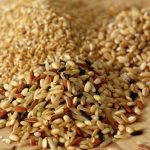
Your metabolism rate determines how fast you burn calories, and that can influence how fast you lose weight — and how easily you can gain it. After age 25, metabolism naturally slows by 5 percent every decade. So if you eat as much in your 40s as you did in your 20s, you’re going to add extra pounds — especially if you exercise less and lose muscle. In addition to weight training to maintain muscle, these tips from the American Council on Exercise can help. Stick to well-spaced meals at the same times each day. This lets your body know to expect fuel at regular intervals and prevents it from conserving calories and adding to fat stores. Calorie cutting is important if you need to lose weight, but reducing your intake to starvation levels also puts your body in conservation mode, slowing down metabolism. So rather than speeding up weight loss, starvation ultimately slows it. And that’s why it’s so easy to regain lost weight when you start eating normally: Your metabolism tends to stay slow. Dehydration can lead to a 2 percent drop in the number of calories burned, so drink at least 8 glasses of water throughout each day, and even more when you sweat a lot. Watch the alcohol. Besides adding empty calories to your diet, processing alcohol diverts the liver from… read on >




































